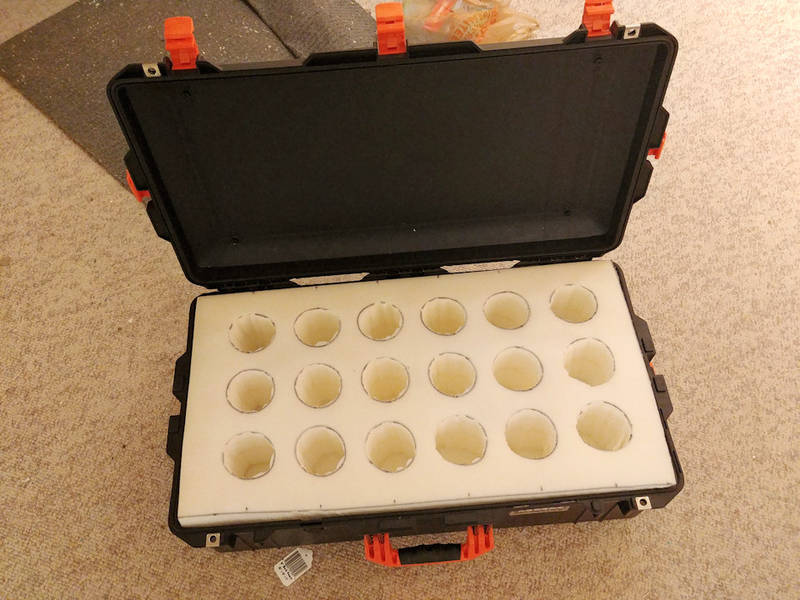Insulator carrying case
By Nathan Holmes; posted November 11, 2018
View Original: Click to zoom, then click to magnify (960 x 720) 229KB

|
Several months back, when I made the decision to finally go to my first Springfield show, I'd asked on the list about how folks protected insulators while flying. I want to thank everyone who offered their ideas and experiences, as what I did very much was a combination of several of those ideas. I wanted to share my solution, in case others might want to do something similar. Construction Details: I started with something almost indestructible - a Pelican Air 1615 case to be exact. These are rugged, hard cases designed to protect delicate equipment, and unlike the traditional Pelican line which rival tanks in terms of weight, are specifically made of lightweight material. The 1615 is the maximum US checked luggage size, and weighs 14 pounds empty. For the inside, I ordered two 24x72 pieces of high density upholstery foam from Amazon - one 2" thick, one 3". The interior of the case is 16" by 30", with the base being 8" deep and the lid being 2". I then cut 2 pieces (16x30) of each. One 2" slab went on the bottom, one went on top. The two 3" pieces were glued together using 3M 80 Spray Adhesive for Foam Rubber. The trick to cutting polyurethane foam is a serrated knife, not a hot wire like other types of foam. Most polyurethane used in foams is a thermoset polymer and does not remelt - it just burns and gives off toxic fumes. I used an electric kitchen carving knife (we'll call it a "pre-Thanksgiving test") to cut the big pieces of foam down into the 16x30 chunks, and it cut through it very nicely. Given that an average insulator weighs somewhere between 1-1.5 pounds (randomly grabbing things off the shelf and putting them on a scale) and the case with foam weighs about 18 pounds, that left me with ~32 pounds to work with to stay under the typical US 50lb bag limit. So the upper limit was about 21 insulators. I also figured out that could get most glass pintypes in a 3" hole in the foam and they'd fit nicely. Doing a little math, I arrived at a grid of 18 holes, 3 wide and 6 long, spaced at 4.5" centers. That gave me 1.5" of foam between pieces and 2" between any piece and the edge. At each center point, I just used a 3" cardboard circle to draw a circle. Then, I would stab through the foam using an old steak knife, and then using that initial slit insert a serrated bread knife to cut the circle out. I tried the electric knife, but found I had better control doing it by hand. I saved the cores that I cut out, and sliced about 1.5" off each end. Since most insulators aren't going to be 6" tall, I put one slice at the bottom of each hole and used the other as a cap at the top. |